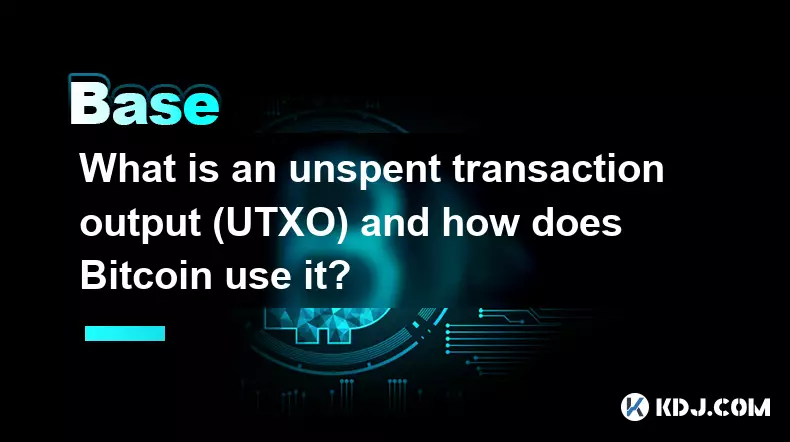-
 bitcoin
bitcoin $103128.103252 USD
-3.33% -
 ethereum
ethereum $3437.127692 USD
-4.86% -
 tether
tether $0.999700 USD
-0.02% -
 xrp
xrp $2.403993 USD
-5.73% -
 bnb
bnb $961.374676 USD
-4.11% -
 solana
solana $154.938665 USD
-8.18% -
 usd-coin
usd-coin $1.000113 USD
0.03% -
 tron
tron $0.298122 USD
0.30% -
 dogecoin
dogecoin $0.172428 USD
-5.76% -
 cardano
cardano $0.557625 USD
-7.13% -
 hyperliquid
hyperliquid $38.740701 USD
-6.51% -
 chainlink
chainlink $15.306051 USD
-7.51% -
 bitcoin-cash
bitcoin-cash $507.558648 USD
-3.26% -
 stellar
stellar $0.281899 USD
-6.74% -
 unus-sed-leo
unus-sed-leo $9.241811 USD
0.57%
What is a cryptographic salt and how does it enhance password security?
Cryptographic salt ensures unique password hashes, thwarting rainbow table attacks and enhancing security in blockchain wallets and dApps.
Nov 08, 2025 at 07:59 am

Understanding Cryptographic Salt in Security Protocols
1. A cryptographic salt is a random string of data that is added to a password before it is hashed. This process ensures that even if two users have identical passwords, their resulting hash values will differ due to the unique salt applied to each.
2. The primary purpose of salting is to defend against precomputed hash attacks, such as rainbow table attacks. Without a salt, attackers can use tables of pre-hashed common passwords to reverse-engineer user credentials quickly.
3. Each password should be paired with a unique, randomly generated salt. This means that even repeated instances of the same password across a database produce entirely different hash outputs, making bulk decryption significantly more difficult.
4. Salts are not intended to be secret. They are typically stored alongside the hash in the database. Their value lies in increasing the complexity of brute-force and lookup-based attacks rather than in obscurity.
5. Modern security frameworks like bcrypt, scrypt, and Argon2 automatically handle salting internally, ensuring developers don’t need to manage it manually while still maintaining high resistance to cracking attempts.
Role of Salting in Blockchain Wallet Protection
1. In cryptocurrency wallets, private keys are often protected by passwords or passphrases. These credentials undergo hashing processes where salting plays a crucial role in securing access.
2. When a user sets up a wallet, the software generates a unique salt for that instance. This salt is combined with the chosen passphrase before being processed through a key derivation function like PBKDF2 or HKDF.
3. Even if two users choose the same recovery phrase or PIN, the inclusion of individualized salts ensures their derived encryption keys remain distinct.
4. Wallet backup files, such as encrypted keystores used in Ethereum clients, embed both the salt and the iteration count so the correct key can be re-derived during login without compromising security.
5. Attackers attempting to compromise wallet databases face exponentially increased computational costs when trying to crack multiple salted hashes, especially when combined with slow hashing algorithms designed to resist GPU or ASIC acceleration.
Preventing Credential Reuse Attacks in Decentralized Applications
1. Many decentralized applications (dApps) rely on traditional authentication methods for onboarding users, particularly those integrating Web2-style login systems.
2. If these platforms fail to implement proper salting mechanisms, leaked password databases could expose users not only on that platform but also across other services where they reuse passwords.
3. By applying unique salts per user account, dApp developers mitigate the risk of mass credential exposure even if backend data is compromised.
4. Combined with rate-limiting and multi-factor authentication, salting strengthens the overall defense layer around user identities interacting with smart contracts and blockchain networks.
5. Open-source projects within the crypto ecosystem often publish their authentication logic, allowing community audits to verify correct salt generation, storage, and usage practices.
Frequently Asked Questions
Q: Can salts be reused across different users? A: No, reusing salts defeats the main purpose of salting. Each user must have a unique salt to ensure identical passwords result in different hashes.
Q: Are cryptographic salts the same as nonces? A: While both are random values, salts are used specifically in hashing to enhance password security, whereas nonces are typically used in communication protocols to prevent replay attacks.
Q: How long should a cryptographic salt be? A: A salt should be at least 16 bytes (128 bits) long to provide sufficient randomness and resist collision attacks. Longer salts offer marginal benefits but are generally unnecessary.
Q: Do hardware wallets use salting? A: Hardware wallets primarily protect private keys using secure elements and PIN entry mechanisms. While they may not store passwords directly, the host software managing backups or companion apps often employs salted hashing for additional layers of protection.
Disclaimer:info@kdj.com
The information provided is not trading advice. kdj.com does not assume any responsibility for any investments made based on the information provided in this article. Cryptocurrencies are highly volatile and it is highly recommended that you invest with caution after thorough research!
If you believe that the content used on this website infringes your copyright, please contact us immediately (info@kdj.com) and we will delete it promptly.
- Dogecoin, Investor, Knowledge: Navigating the Meme Coin Mania in 2025
- 2025-11-13 00:40:00
- Mississippi Retailers and the Penny Predicament: What's a Cash Customer to Do?
- 2025-11-13 01:00:02
- Hyperliquid, Aster Whales, and Zero Knowledge Proof: A New Era of Crypto?
- 2025-11-13 01:20:01
- XRP vs. Crypto Presales: Can Digitap or LivLive Deliver a 100x Return?
- 2025-11-13 01:15:01
- Hedera, Regulated Assets, and Dual Token Flexibility: A New Era for Tokenization
- 2025-11-13 01:45:01
- XRP, Cardano, and the Altcoin Arena: What's Hot Now?
- 2025-11-13 01:25:03
Related knowledge

What is the difference between a transparent and a shielded transaction?
Nov 10,2025 at 05:59pm
Understanding Transparent Transactions in Cryptocurrency1. Transparent transactions are the standard form of transaction on most public blockchains li...

What is a "crypto airdrop farmer" and what strategies do they use?
Nov 09,2025 at 03:39pm
What Is a Crypto Airdrop Farmer?1. A crypto airdrop farmer is an individual who actively participates in blockchain projects to qualify for free token...

What is an unspent transaction output (UTXO) and how does Bitcoin use it?
Nov 12,2025 at 01:40am
Understanding the Concept of Unspent Transaction Output (UTXO)1. An Unspent Transaction Output, commonly referred to as UTXO, is a fundamental compone...

How do you track a crypto portfolio across multiple wallets and chains?
Nov 12,2025 at 04:19pm
The Evolution of Decentralized Exchanges in the Crypto Ecosystem1. Decentralized exchanges (DEXs) have transformed how users trade digital assets by r...

How does a crypto insurance protocol work?
Nov 08,2025 at 12:39am
Understanding Crypto Insurance Protocols1. A crypto insurance protocol operates by offering financial protection against losses incurred from digital ...

What is token composability and why is it called "DeFi Legos"?
Nov 09,2025 at 06:39am
Bitcoin's Role in Decentralized Finance1. Bitcoin remains the cornerstone of decentralized finance, serving as a benchmark for value and trustlessness...

What is the difference between a transparent and a shielded transaction?
Nov 10,2025 at 05:59pm
Understanding Transparent Transactions in Cryptocurrency1. Transparent transactions are the standard form of transaction on most public blockchains li...

What is a "crypto airdrop farmer" and what strategies do they use?
Nov 09,2025 at 03:39pm
What Is a Crypto Airdrop Farmer?1. A crypto airdrop farmer is an individual who actively participates in blockchain projects to qualify for free token...

What is an unspent transaction output (UTXO) and how does Bitcoin use it?
Nov 12,2025 at 01:40am
Understanding the Concept of Unspent Transaction Output (UTXO)1. An Unspent Transaction Output, commonly referred to as UTXO, is a fundamental compone...

How do you track a crypto portfolio across multiple wallets and chains?
Nov 12,2025 at 04:19pm
The Evolution of Decentralized Exchanges in the Crypto Ecosystem1. Decentralized exchanges (DEXs) have transformed how users trade digital assets by r...

How does a crypto insurance protocol work?
Nov 08,2025 at 12:39am
Understanding Crypto Insurance Protocols1. A crypto insurance protocol operates by offering financial protection against losses incurred from digital ...

What is token composability and why is it called "DeFi Legos"?
Nov 09,2025 at 06:39am
Bitcoin's Role in Decentralized Finance1. Bitcoin remains the cornerstone of decentralized finance, serving as a benchmark for value and trustlessness...
See all articles










































































